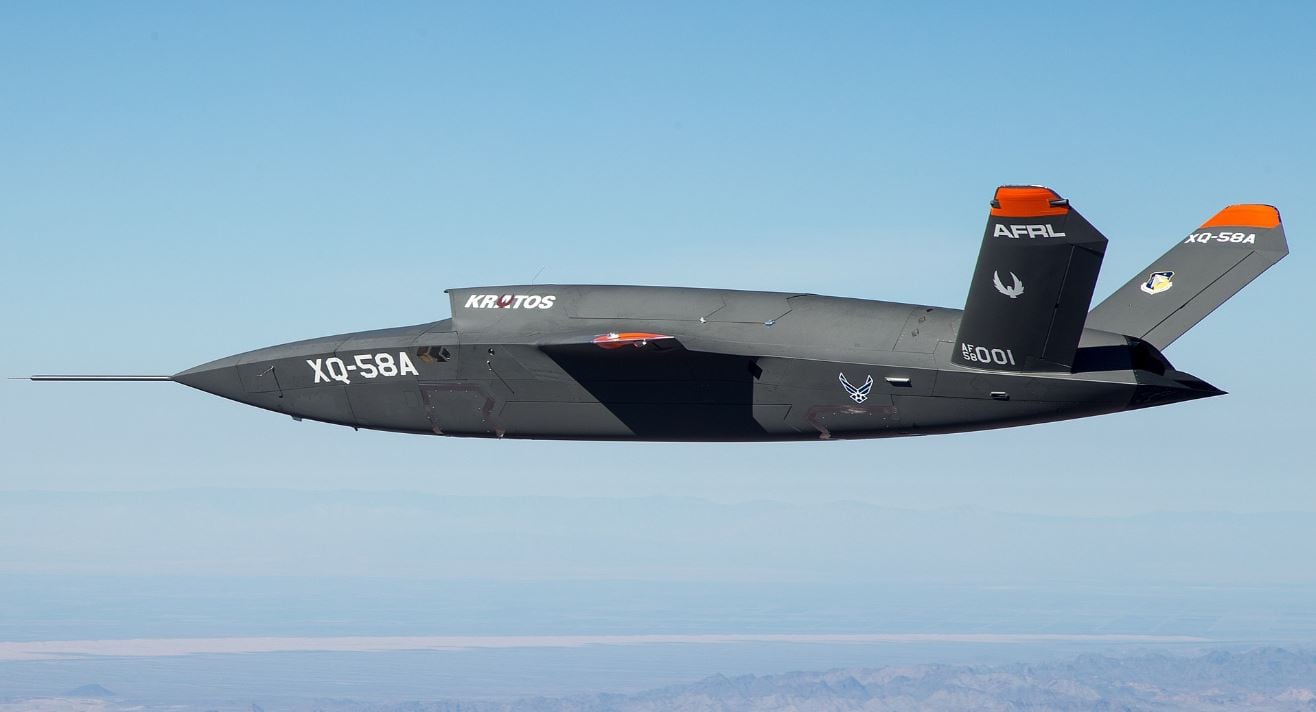WASHINGTON — The U.S. Air Force could narrow the playing field of its Skyborg competition by the end of this summer, with plans to dole out awards to one or more companies to begin prototyping an autonomous combat drone.
Last week, the service selected Boeing, Kratos, Northrop Grumman and General Atomics to receive indefinite delivery indefinite quantity contracts for the Skyborg program.
The next step involves the service meeting with the four companies to get a better sense of their proposed aircraft ahead of issuing the first order for prototypes anywhere over the next 60 to 90 days, said Brig. Gen. Dale White, who leads the Air Force’s program office for fighters and advanced aircraft.
RELATED

How many competitors move on to the next stage of the program is yet to be determined, and will depend on how many drones the Air Force can buy with its available funding. Although each of the four companies’ contracts have a ceiling of $400 million, no money has been awarded yet.
“We have a set amount of money. We’re somewhat constrained on dollars early on, but we have a plan in place both for this year and [fiscal] 2021,” White told reporters during a roundtable Tuesday. “That’s going to largely determine what the unit vehicle cost is going to be. That will determine how many we buy, and it will also determine how many we buy from whom.”
White acknowledged that selecting multiple drones would help “push the bounds” of flight experiments that will start in 2021, as each aircraft differs in design characteristics that could benefit different missions.
Skyborg — one of the Air Force Research Laboratory’s three “vanguard” programs that have been tapped as a potential gamechanger — was conceived as an drone wingman that could use artificial intelligence to autonomously traverse a battlefield, collecting intelligence and sending important information to fighter pilots.
At only a couple million dollars per copy, the air vehicles under consideration for Skyborg are considered “attritable,” meaning they are reusable but cheap enough that losses can be tolerated.
But it will take some time to develop Skyborg from its initial stages, where it will use algorithms to autonomously react to certain conditions, to a more advanced, AI-enabled decision-making process.
The Air Force identified 15 mission for Skyborg, such as base defense, communications relay or collecting data, White said. Those prospective missions will help inform how the service experiments with the Skyborg prototypes next year, but ultimately user feedback will determine its role on the battlefield.
“Ultimately, we are progressively adding to the autonomy and working with the war fighters and getting their feedback on what makes the most sense for the operational employment of these attritable aircraft,” said Brig. Gen. Heather Pringle, AFRL’s commander.
The Air Force previously said Skyborg could be operational as early as 2023, but White said initial fielding dates have not been decided.
“That will have to be a discussion inside the larger Air Force,” he said. “I think we’re going to look for operational user input because once we get into those operational experimentation exercises, the war fighter can get pretty excited about what we can do, and then we’ll start making decisions with respect to maturity and how we want to move forward and how quickly we want to field some.”
Valerie Insinna is Defense News' air warfare reporter. She previously worked the Navy/congressional beats for Defense Daily, which followed almost three years as a staff writer for National Defense Magazine. Prior to that, she worked as an editorial assistant for the Tokyo Shimbun’s Washington bureau.








